Artist Interviews 2021
Matthew Wood 
by Johnny Otto
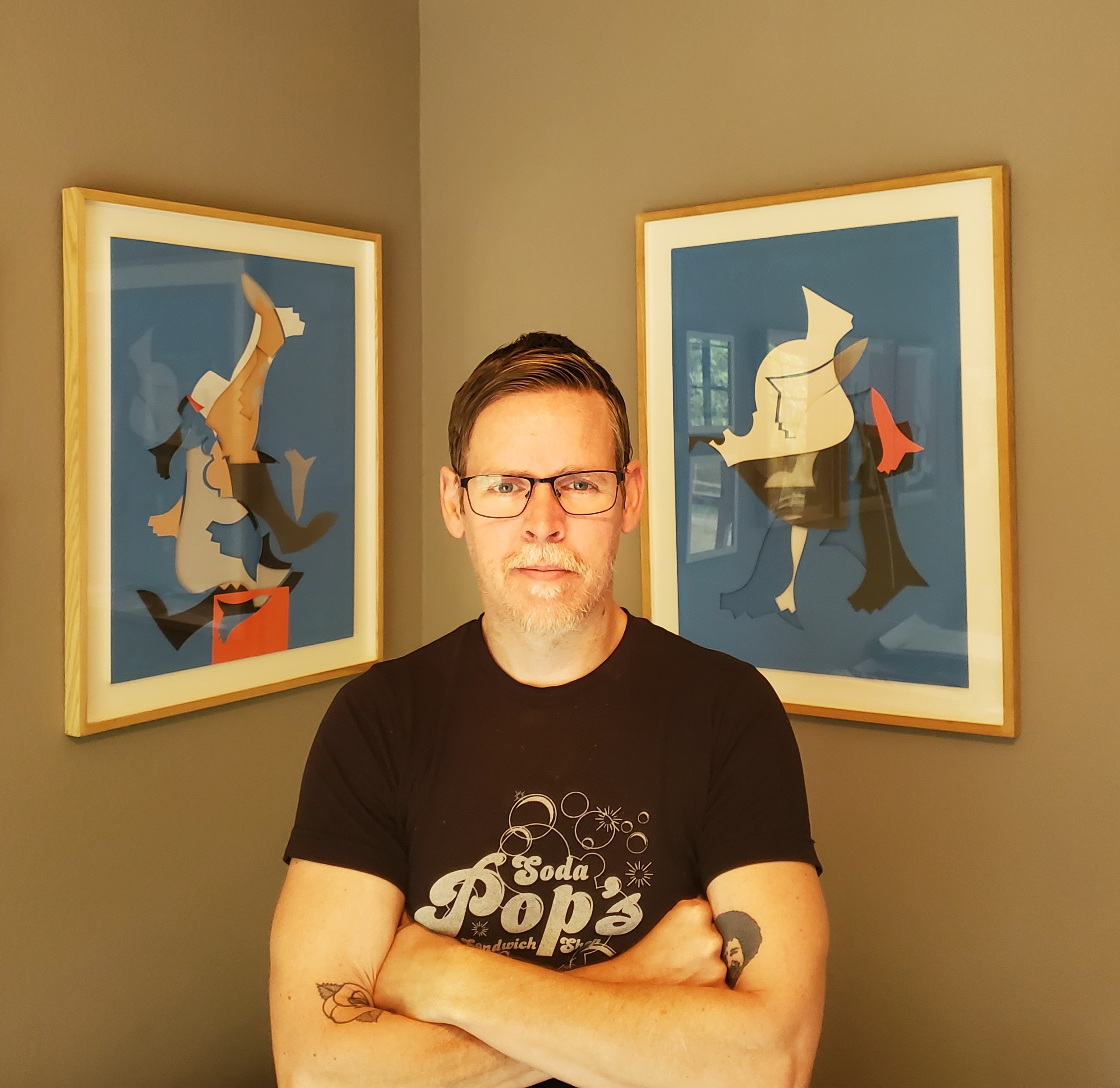
I see a bit, just a bit of Picasso during his Cubism period. Did his work influence you a lot or who would you give credit to, if you had to?
First, I'd like to thank Artsquat magazine for the opportunity to share a bit about my artwork and myself. Picassso definitely disserves a
lot of credit as far as an influence on my work is concerned, especially his epic masterpiece Guernica. My Mother is an artist and I recall looking
through her collection of art books when I was a child. On of my favorites was about Guernica, it's conception and history. Though I was too young to understand
the painting's commentaries about the atrocities of war, it was the visual aspects of the work that captured my imagination. Such as, composition, line quality
and the use of "figure-ground" technique. In addition to Picasso, there have been countless artists and artistic movements that have inspired me over the years.
Here are a few notables... Edgar Degas, Henry Matisse, Willem de Kooning, Alexander Calder, Francis Bacon, Loiuse Bourgeois, Henry Moore, Andy Warhol,
Cubism, Abstract Expressionism, Minimalism, Pop Art, Japanese design and so much more.
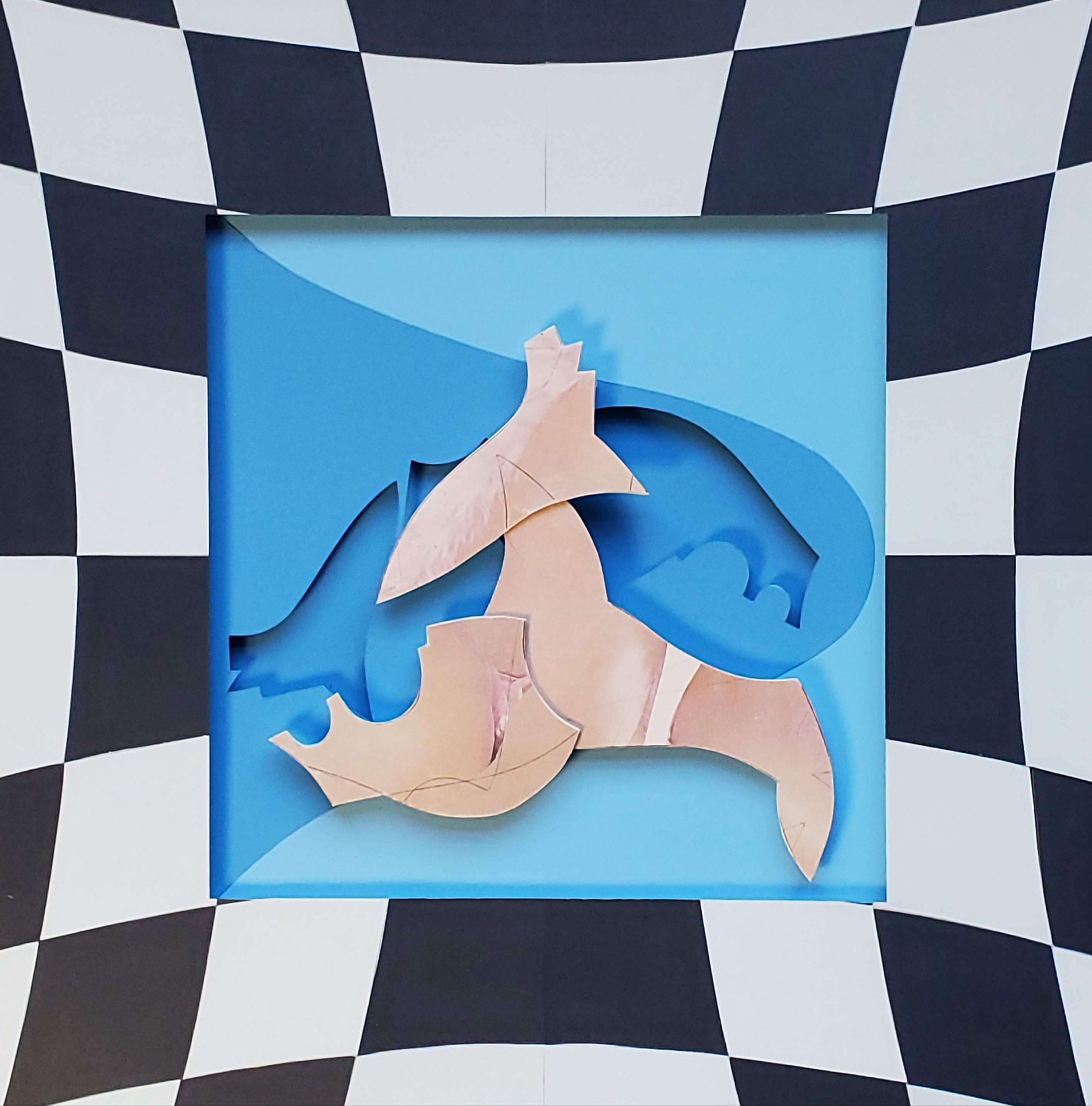
One could say that you work "dances". You look like a Ballerina. Did you ever study dance or is there no correlation to your work and the world of dance?
Awesome. I love the fact that the work "dances" for you! LOL... That's funny. Though I do greatly enjoy a good dance party and may still have a few moves, I've never trained as a professional dancer. However, I did date a ballerina several lifetimes ago. Over the course of our relationship I developed a great respect for ballet/dance and was fortunate to attend dozens of performances. Taking my newly found appreciation for ballet further I began going to the local ballet company twice a week to sketch the dancers as they rehearsed. These sketches helped inform the development of my early figurative abstractions, which ultimately paved the way to creating my Biomorphagram forms a few years later.
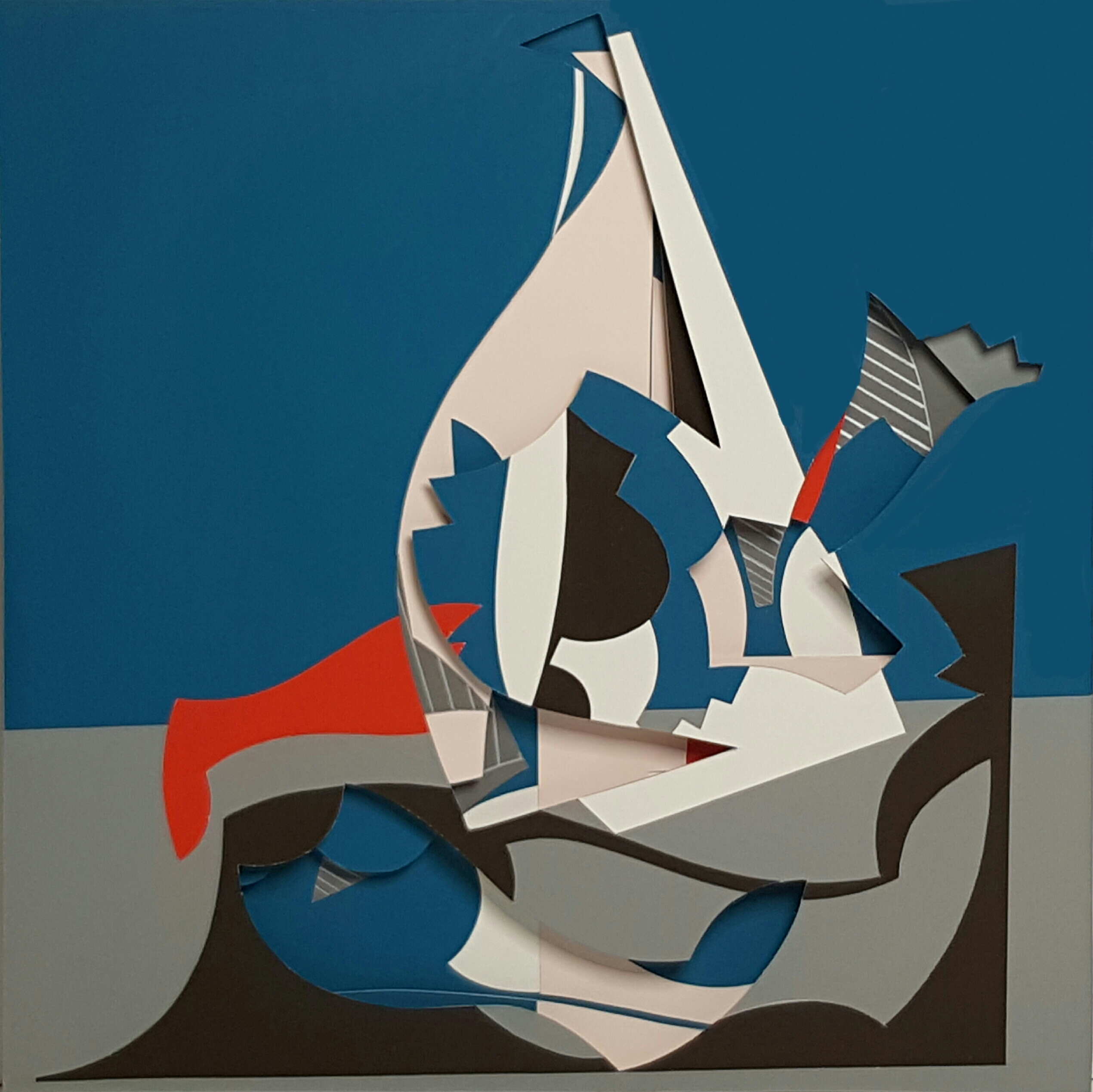
Let's talk about technique. As an Artist myself, I am always trying to learn new ways of doing things. Now, you may not want to give away your secrets,
but I wish you would. Can you walk us through the construction of a piece? Types of paper, glue, cutting device, etc...Geek out with the specifics.
Ah, technique... Everyone wants to know the secrets! What most people don't realize is that even though my work is technically constructed of paper, I consider them paintings. This is due to the materials employed. A bit of history... Over two decades ago I began exploring ways of making a painting without actually painting. Obviously, there was a lot of trial and error... Waxes, resins, dry pigment, string, paint chips and other materials were all fair game. Eventually I stumbled across the Holy Grail of art paper, Chroma Rama. Chroma Rama was produced from the late 1960s through the mid 80s for graphic artists. At the time of manufacturing wet pigment (paint) was screen printed onto a thin and durable rag paper. Problem solved, I found my material. Now to the construction... Because the Chroma Rama is a thin material and I want to make several rigid layers it must be laminated to a sheet of 3ply or 4ply vellum. As far as adhesives go, I prefer sheets of double tack - basically acid free contact paper. Once I've selected my palette of Chroma Rama, figured out how many layers will be needed and the overall dimensions of the piece, I'll cut everything and make the Chroma Rama sheets into stickers. These Chroma Rama stickers are then adhered to the vellum. Now that the layers are ready, the composing begins. Taking several of my Biomorphagram templates, which are "stylized" forms comprised of photographing and manipulating pedestrians' shadows, I begin placing them on the picture plane and creating a formal composition. Once each layer has been composed and the forms adhered I'll flip the layers over. On the back of each layer a different composition is created using the Biomophagram templates. This time only outlines of the templates are necessary. Next, using a standard #11 exacto knife, I'll cut out the Biomorphagram forms on the non-color side of the vellum. After cutting out the forms from the backs of each layer I flip them over, back to the color-side and then stack the layers in order. At this point we can see the piece and may make any adjustments before spacing the layers. When spacing the layers I prefer to use acid free foam core. In addition to the Chroma Rama I also use large format 18"x18" paint chip samples produced by Benjamin Moore. Like Chroma Rama, said paint chip samples are no longer manufactured and extremely difficult to find. In the last year or so vintage Playboy magazine cut outs have made it into the mix. I've also started playing around with magnetic heat prints, aka Xerox technology. Basically, I've been using my printer to transfer images on to the Chroma Rama and paint chips. Thus, adding more depth and dimension to the work.
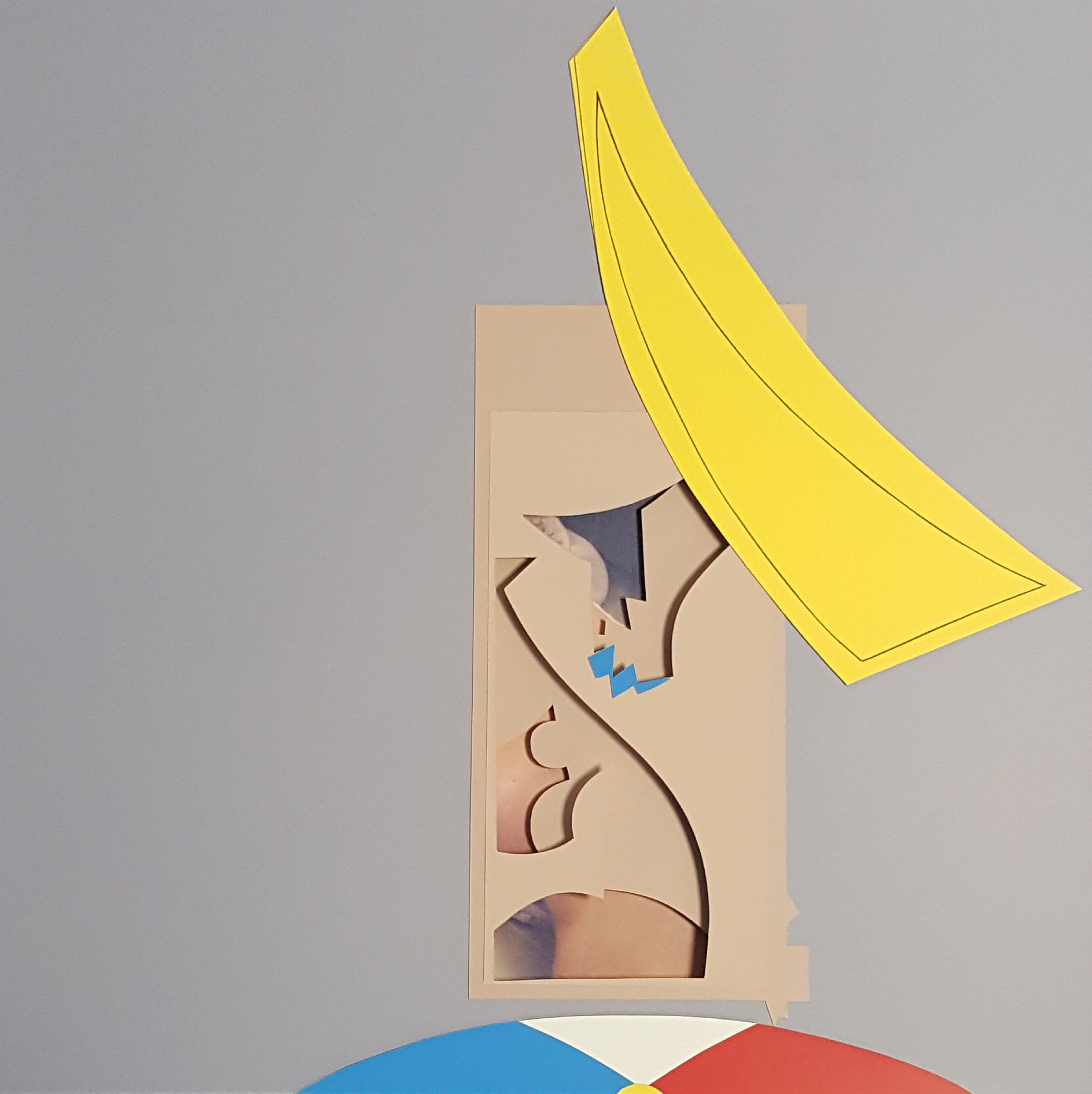
Are you currently showing or what is going on in your world right now?
I'm not currently showing...Obviously, it's been a pretty crazy year! Last June I was slated to have my second solo exhibition and first major show in Dallas.
Unfortunately, the gallery put my show and all others on hold. Hopefully they'll be rescheduled sooner than later. In October I was fortunate enough to be invited, by a curator friend,
to participate in a large group show in NYC and in November took part in another show held in Fort Worth.
Like everyone, I'm looking forward to getting things open.
Though the internet has a lot of art to look at, I prefer to view work and have my work viewed in person. Until then, I'll be in the studio having fun. Looking forward to sharing some new work when the time is right!
**UPDATE: Matthew Wood Solo Show will be at Umbrella Gallery, 2803 Taylor St. 75226 (in the Deep Ellum area of Downtown) Dallas.
Dates: July 3 - August 29, 2021
Artist reception: Saturday, July 24 6-8 pm
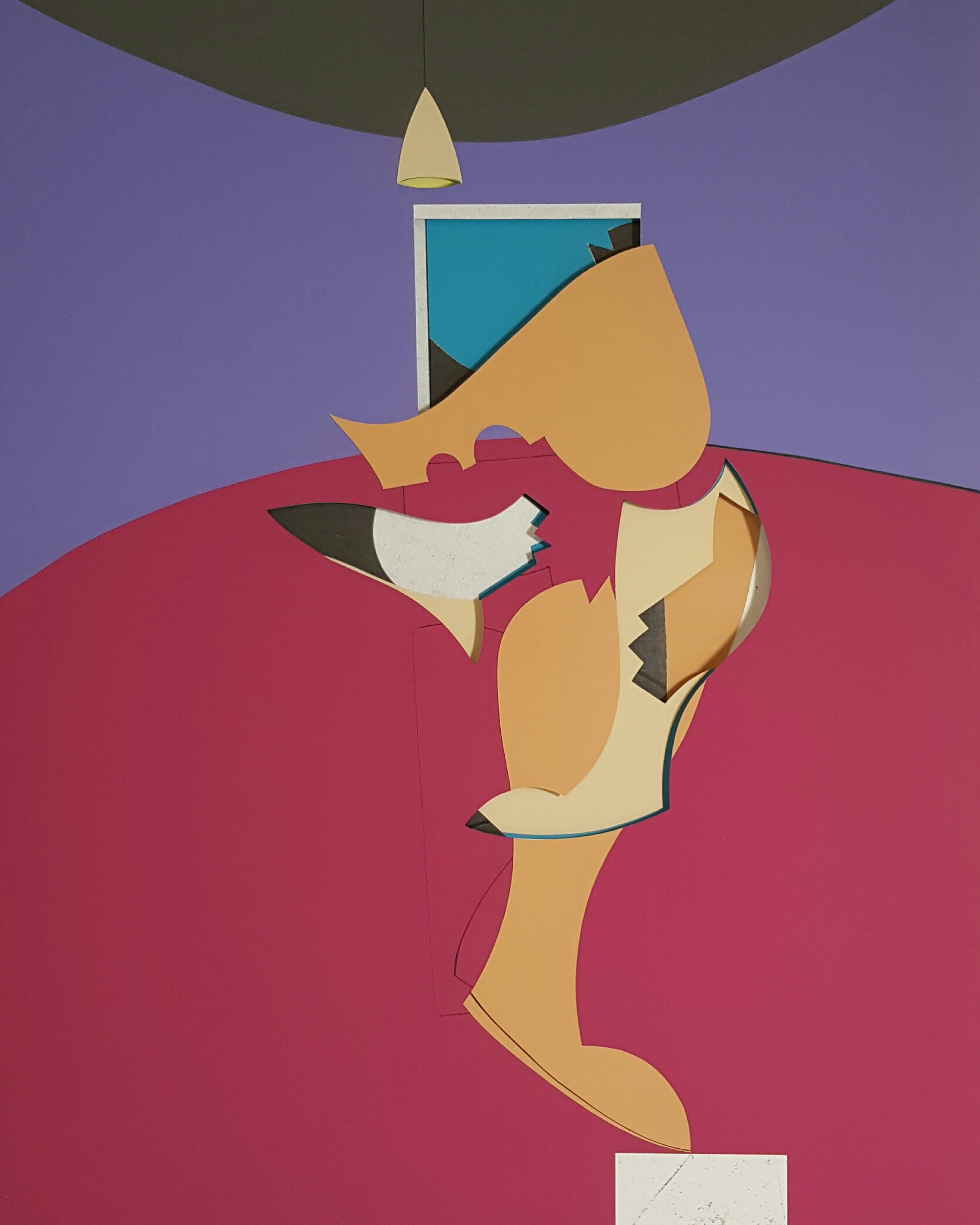
I knew you from your time in Los Angeles but you've since moved to Texas and it;s been a few years now.
How have you changed since leaving Los Angeles? How has the new environment affected your mental state as a creator?
And what great times they were, in LA. Well, I'm definitely getting more sleep and finally able to save some money.
Seriously though, it's been quite a change. Mainly, my social life has shifted the most. While in Los Angeles I was fortunate
to work with some great people at some great places, like The Pikey and The Roger Room; two of the best bars at the time.
I'd work all day in the studio and then head to the bar and work all night. Being around and working with other artist, actors,
singers and musicians was very inspiring and really fueled my artistic energies. Luckily, I have a lot of family in the Dallas area and
am grateful to be spending some quality time with them. They're my biggest fans. All in all, Dallas/Fort Worth has been more than welcoming
and has proven to be a city on the artistic rise. The future looks bright!
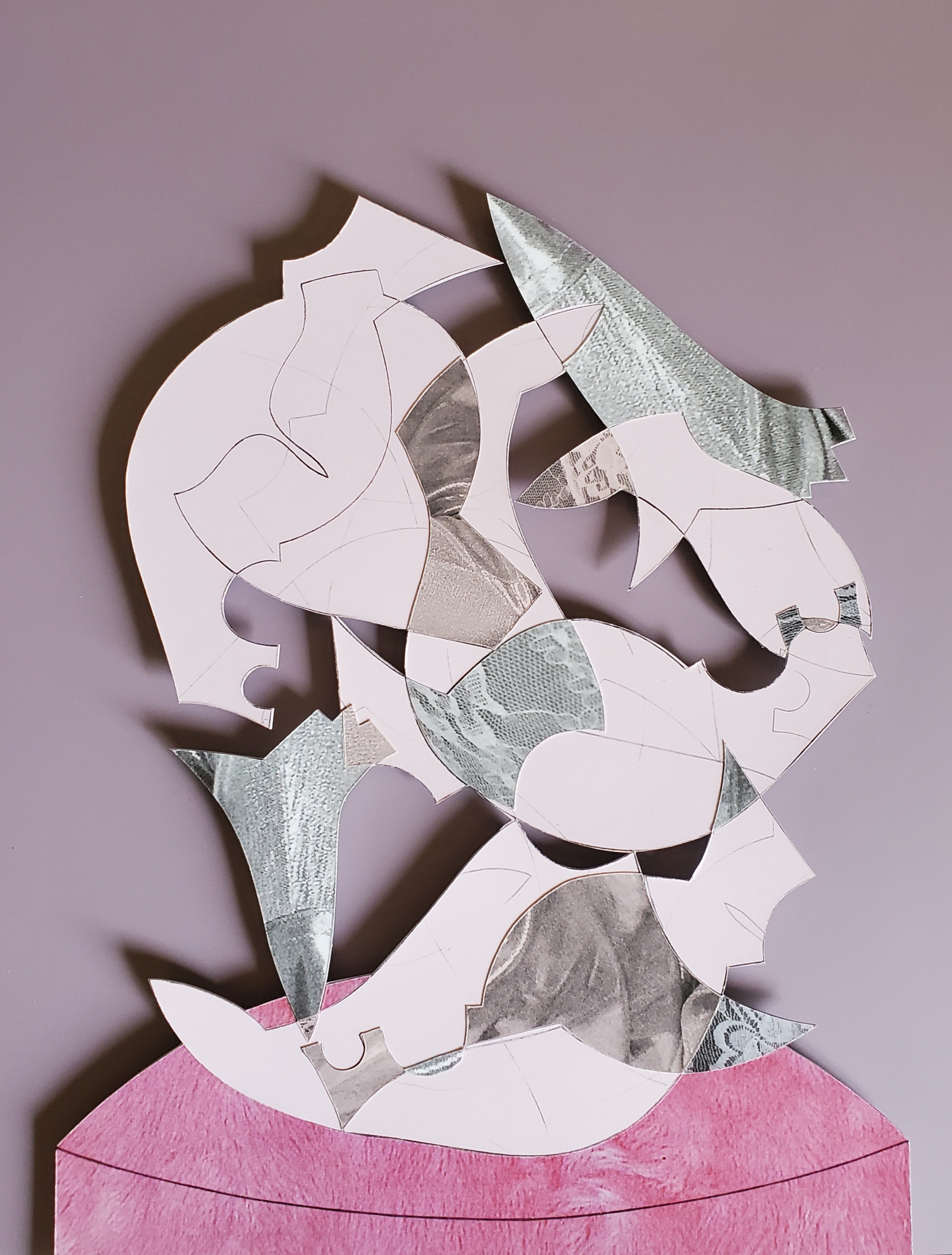
Let's talk about figurative art, because in addition to seeing dance and movement in your work, I also see the human form in a sort of dissected fashion.
Disfigured and re-arranged to suit your purposes.
I've always been attracted to figurative art of all kinds, from de Kooning's abstract expressionist Women series to Picasso's Cubistic stylized and fractured figures. As a young art student my favorite class was figure drawing, probably because it was the most difficult. For me it was not only studying the human form, but form in general and how a multitude of abstract forms come together to create a lager more complex form, i.e. the human body. Once these concepts were understood I was able to begin down the path of figurative abstraction. Years later, I started photographing the shadows of pedestrians on the sidewalks of New York City as they walked by. Once developed, I cut the shadows from the photographs. Using the shadow forms as templates I made a drawing of several overlapping shadow forms... Think, Jackson Pollock drawing. With a different colored pencil I started outlining newly found forms, created by the overlapping original shapes. Next, I cut out the new shapes and that's how my Biomorphagrams came to be. So yes, all of my work is literally derived from the human form, was dissected and then rearranged in order to create a whole new figure.
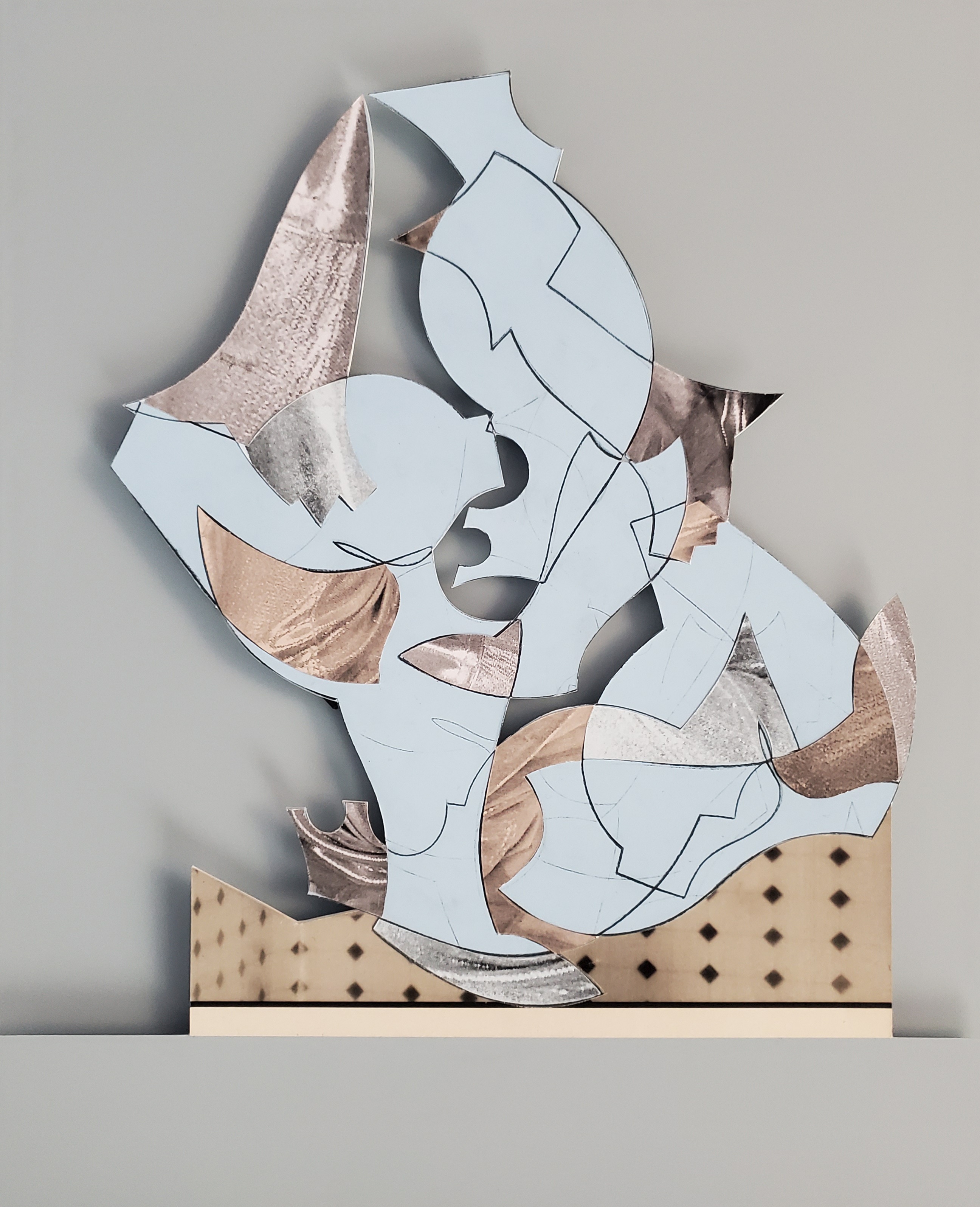
Do you listen to music or how does it inspire you when you create? Your art seems very musical.
I do listen to music, quite a bit actually. Basically, if I'm in the studio... Music is happening. Nostalgia plays a large role in the type of music I select depending on what emotions I'm tapping into. For example, if I'm working on a large and colorful piece something fun is playing, like Jungle Love by The Steve Miller Band, or Supersonic Rocket Ship by the Kinks. Though the work seems musical, which I love, I can't say that the pieces are about music. However, they are inspired by it.
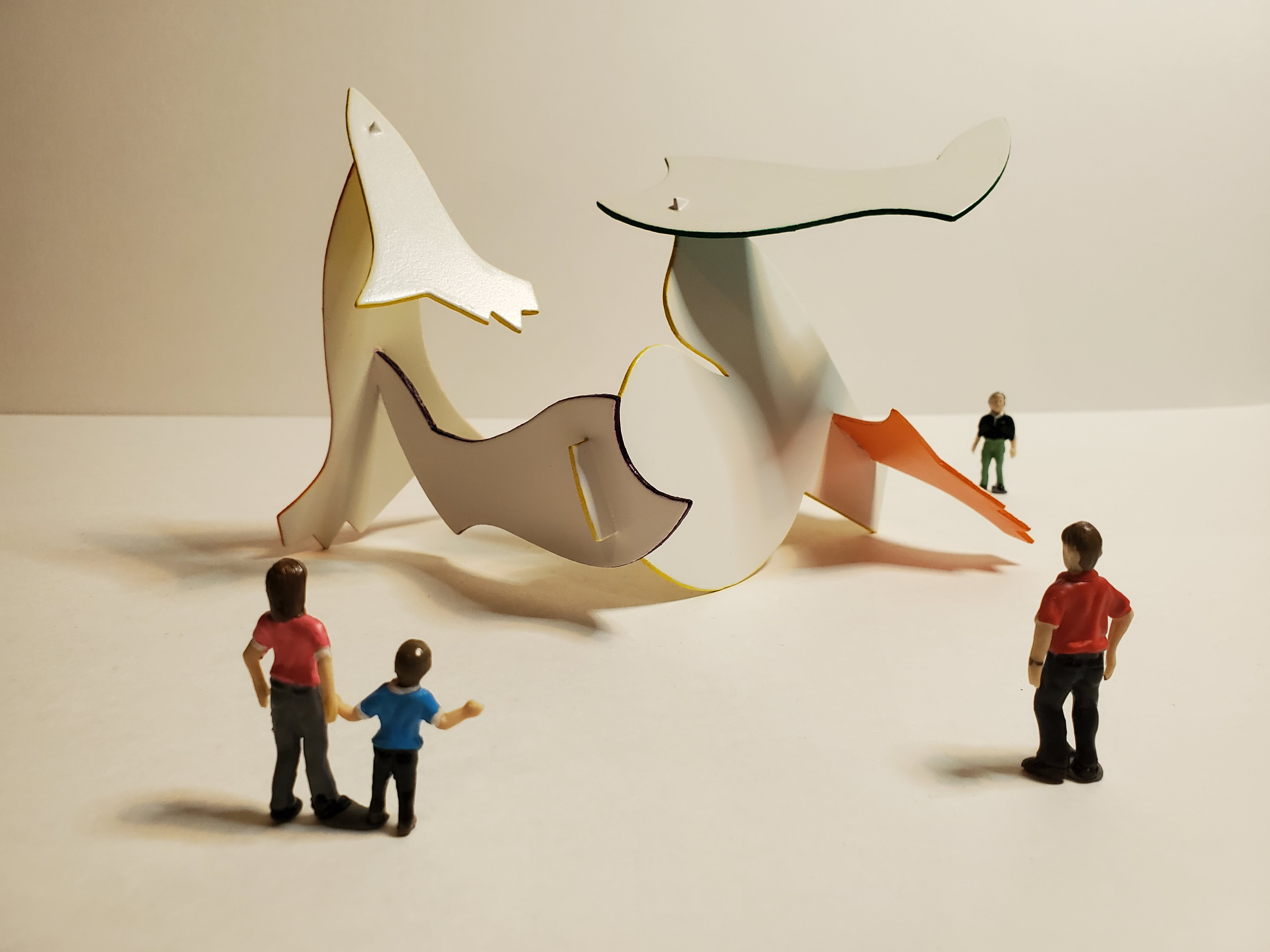
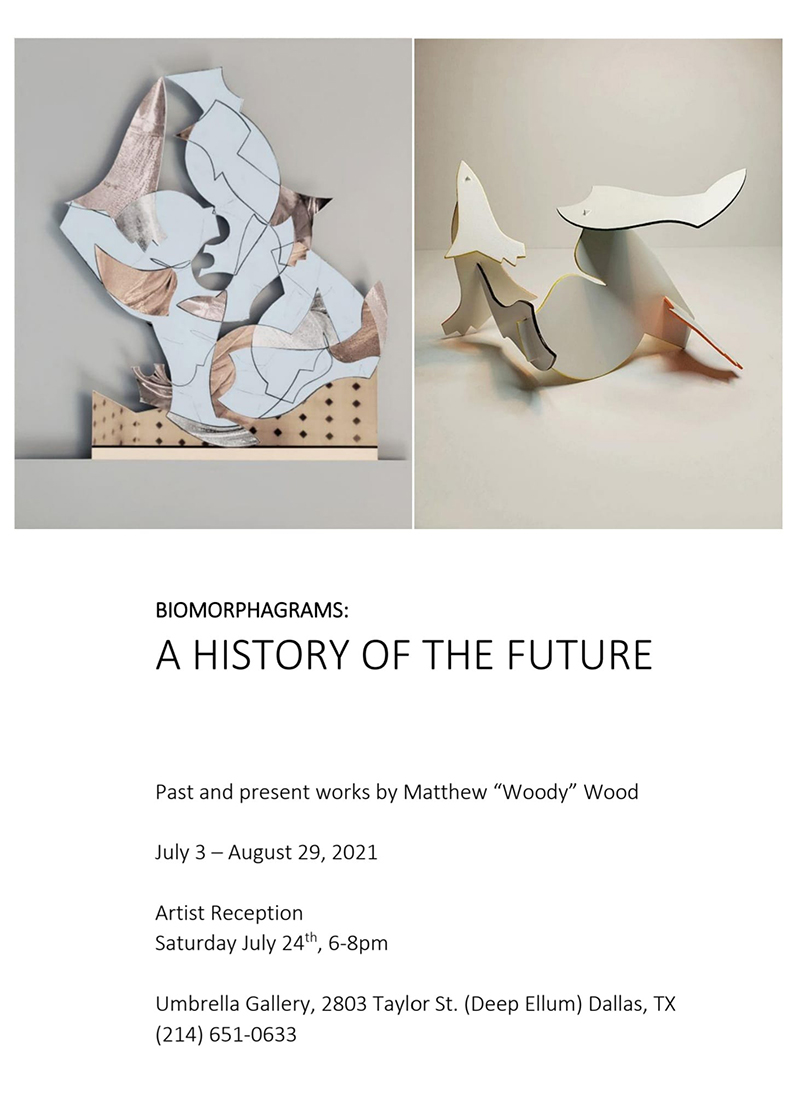
|
|

